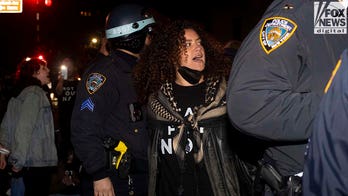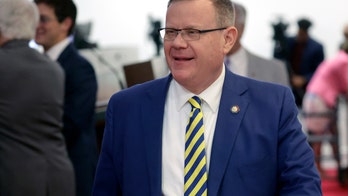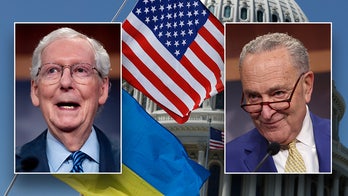Though officials have confidently claimed enrollment in ObamaCare is surging, Vice President Biden suddenly suggested during a stop in Minneapolis the totals might be lower than projected.
"Initially, we talked about by the end of this period having seven million people lined up," he told a group in a coffee shop on Wednesday. "We may not get to seven but we're gonna get to five or six, and that's a hell of a start with people."
That’s quite a difference from the confident predictions last fall, just before the rollout, from Health and Human Services Secretary Kathleen Sebelius.
"I think success looks like at least 7 million people having signed up by the end of March 2014," she told NBC last September.
The nonpartisan Congressional Budget Office stuck with that estimate for the exchanges until just recently, when it lowered its projection from 7 million to 6 million. But the vice president is the first to mention a number as low as 5 million, suggesting doubts in the administration.
In its report on signups through the end of January, the administration claimed 9.6 million total had gotten health insurance -- 3.3 million in the federal and state exchanges, and another 6.3 million in Medicaid, the health care program for low-income Americans.
But a nonpartisan health care firm says the number of new signups in Medicaid from ObamaCare is much lower than 6.3 million.
"It's about 1.3 to 1.8 million people who are new to the program The rest are part of the regular churn that are in and out," Matthew Eyeles, of the firm Avalere Health, said.
And those in the regular churn -- those who come and go all the time – wouldn’t count as part of ObamaCare because they were already eligible before the health care law.
For those new to Medicaid under the expansion encouraged by ObamaCare, the administration pays 100 percent of the cost for the first three years. But it pays no additional funds for those already eligible, which is often one of the top three items in state budgets:
"The state pays that bill," said former CBO Director Doug Holtz-Eakin. "If it's the expansion, the federal government pays the bill. So it matters a lot whether it's newly eligible or existing eligible who are signing up."
Meanwhile, the vice president might have also irritated other officials by giving the wrong date for the end of enrollment.
"There's a drop-dead date for the first round -- in the beginning of March," he told the coffee-shop gathering.
Actually, open enrollment goes to the end of March, not the beginning.
If the vice president is right on the numbers, though, and only 5 million sign up in private exchanges -- and fewer than 2 million newly eligible enrollees enter Medicaid – then the administration would be hard-pressed to hit half the original projection of 16 million total by next month.




